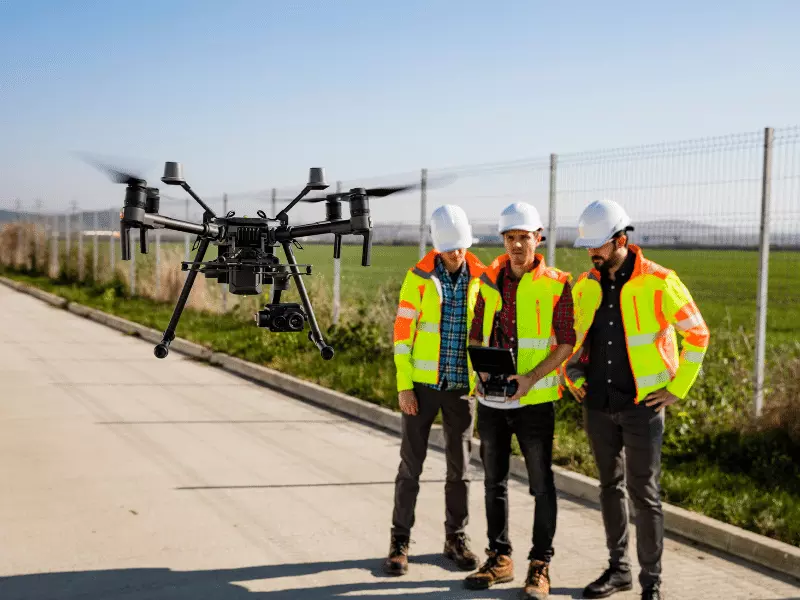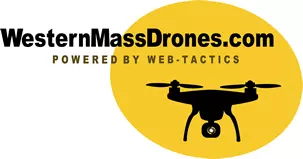The Boom in Commercial Drone Inspections

The reason behind this explosion in popularity is quite simple - drones provide a fast, safe, and cost-effective way to conduct inspections & maintenance tasks that would otherwise be either too dangerous or too expensive to carry out.
In the energy sector, for example, drone inspections are becoming mandatory for energy audits and infrastructure inspections. This is because drones can quickly and easily identify areas of potential improvements, such as damaged equipment or leaking pipes, without putting workers in harm's way. Not to mention, drone inspections are also much cheaper than traditional methods, such as scaffolding or cherry pickers.
It's not just the energy sector that is benefitting from drone inspections.
- Real estate companies are using drones to inspect & market properties before they are put on the market. Learn more about Real Estate Drone Photography
- Construction companies are using them to track progress on-site and identify potential health & safety hazards. The list goes on. Learn more about Construction Site Monitoring
- Solar farms are using drones to survey and inspect acres of solar panels without the need for expensive and time-consuming manual inspections. Learn more about Drone Solar Panel Inspections
- Churches and educational institutions are using drones to inspect steeples and roofs for storm and other weather damage. Learn more about Drone Steeple and Roof Inspections
One thing is for sure - drone inspections are here to stay in a variety of industries, which is why we're now seeing companies transitioning into full-scale drone inspection programs.
Commercial Drone Inspections: The Secret Behind the Popularity
A lot has already been said about why drones are so popular, the affordability, the ease of use, and so on. Take power line inspections for example. A traditional inspection of just one power line can take up to two days and cost around $15,000. With a drone, the same inspection can be conducted in a matter of hours for less than $1000 - and that's not even taking into account the safety benefits of keeping workers away from high-voltage power lines.
But it's not just the cost savings that make drone data so valuable, it's also the fact that it provides a level of detail and accuracy that simply isn't possible with traditional methods. This is because drones can fly close to objects and capture high-resolution photos & videos from multiple angles, which can then be stitched together to create a comprehensive 360-degree view.
This level of detail is invaluable for carrying out things like condition assessments, which can be used to identify potential problems before they turn into full-blown emergencies. It also allows businesses to track the progress of projects over time and spot any potential issues that might need addressing. In short, the real secret sauce if you will is the data. Intelligent drone data might save hundreds of dollars and hundreds of hazardous man-hours, while also providing more useful, actionable information.
Drone data is unbelievably accurate
When compared with traditional manual inspections, the data collected by drones is far more accurate. This is thanks to the fact that drones can fly at lower altitudes and capture high-resolution images and videos of hard-to-reach areas, which gives inspectors a much better view of what's going on.
Additionally, as drone technology continues to evolve, we're now seeing the introduction of thermal imaging and other advanced sensors that can be used to detect things like gas leaks, electrical faults, and even structural damage. This data is then processed using artificial intelligence (AI) and machine learning (ML) algorithms to provide users with actionable insights that can help them make better-informed decisions.
Drone data is highly customizable
Another great thing about drone data is that it's highly customizable. This means that you can tailor the data to suit your specific needs, whether that's a traditional inspection report, a simple overview of an area of interest, or a highly-detailed, multi-layered report that shows progress over time. What's more, thanks to the fact that drone data can be easily integrated into existing business systems you can be sure that your team will have all the information they need at their fingertips.
Commercial Drone Inspections
Commercial drone inspections are becoming increasingly popular as a way to save time and money. Drones can be used to inspect everything from buildings and bridges to pipelines and power lines. They are also much more efficient than traditional methods, such as sending workers out to manually inspect structures. Not only do drones allow for a more comprehensive inspection, but they can also be operated remotely, which eliminates the need for workers to put themselves in harm's way. In addition, commercial drone inspections can be conducted much more frequently than traditional inspections, which helps to ensure that potential problems are caught early. As a result, drone inspections are an important tool for keeping commercial infrastructure in safe and functioning condition.
Conclusion
As you can see, there are many benefits to using drones for inspections. From cost savings and improved safety to increased accuracy and customization, drone data is changing the way businesses operate. If you're not already using drones as part of your inspection program, now is the time to start.

